- Home
- Robert J. Sawyer
Calculating God Page 8
Calculating God Read online
Page 8
The Forhilnor tipped his eyestalks, ready to help.
Chen set the heavy book on my desk. “In 1998, a group of astronomers at the Max Planck Institute for Extraterrestrial Physics in Germany announced the discovery of a supernova remnant—what’s left behind after a giant star explodes.”
“I know about supernovas,” said Hollus. “In fact, Dr. Jericho and I were talking about them recently.”
“Okay, good,” said Chen. “Well, the remnant those guys discovered is very close, maybe 650 light-years away, in the constellation of Vela. They call it RX J0852.0-4622.”
“Catchy,” said Hollus.
Chen had little sense of humor. He continued on. “The supernova that formed the remnant should have been visible in our skies about the year 1320 A.D. Indeed, it should have outshone the full moon and been visible even during the day.” He paused, waiting to see if either of us would dispute this. We didn’t, and he went on. “But there is no historical record of it whatsoever; no mention of it has ever been found.”
Hollus’s eyestalks weaved. “You said it is in Vela? That is a southern constellation, both in the skies of your world and mine. But your world has little population in its southern hemisphere.”
“True,” said Chen. “In fact, the only terrestrial evidence we’ve found at all for this supernova is a nitrate spike in Antarctic snow that might be associated with it; similar spikes correlate with other supernovae. But Vela is visible from the land of my ancestors; you can see it clearly from southern China. I’d thought if anybody had recorded it, it would be the Chinese.” He held up the book. “But there’s nothing. Of course, 1320 A.D. was in the middle of the Yuan dynasty.”
“Ah,” I said sagely. “The Yuan.”
Chen looked at me as though I were a Philistine. “The Yuan was founded by Kubla Khan in Beijing,” he said. “Chinese governments were normally generous in their support of astronomical research, but during that time, science was cut back while the Mongols overrode everything.” He paused. “Not unlike what’s happening in Ontario right now.”
“Not bitter, are we?” I said.
Chen shrugged a little. “That’s the only explanation I could think of for why my people didn’t record the supernova.” He turned to Hollus. “The supernova should have been just as visible from Beta Hydri was it was from here. Do your people have any record of having observed it?”
“I will check,” said Hollus. The simulacrum stopped moving; even the torso stopped expanding and contracting. We waited about a minute, and then the giant spider came to life again, Hollus reinhabiting his avatar. “No,” he said.
“No record of a supernova 650 years ago?”
“Not in Vela.”
“Those are Earth years, of course.”
Hollus sounded offended at the suggestion that he might have screwed up. “Of course. The most recent naked-eye supernova observed by either the Forhilnors or the Wreeds was the one in the Large Magellanic Cloud about fifteen years ago. Before that, both races saw one in the constellation you call Serpens, in what would have been very early in your seventeenth century.”
Chen nodded. “Kepler’s supernova.” He looked at me. “It was visible here starting in 1604. It got to be brighter than Jupiter, but you could barely see it during the day.” He pursed his lips, thinking. “That’s fascinating. Kepler’s supernova was nowhere near Earth, or Beta Hydri, or Delta Pavonis, and yet all three worlds saw it and recorded it. Supernova 1987A, of course, wasn’t even in this galaxy, and we all recorded it. But the Vela event of circa 1320 was quite nearby. I’d have thought someone would have seen it.”
“Perhaps a dust cloud intervened?” said Hollus.
“There’s no dust cloud in the way now,” said Chen, “and it would take a cloud either awfully close to the star that blew up or awfully big to obscure the view from Earth and Beta Hydri and Delta Pavonis. Somebody should have seen this thing.”
“Quite a puzzle,” said Hollus.
Chen nodded. “Isn’t it, though?”
“I would be glad to provide you with what information my kind have gathered about supernovas,” said Hollus. “Perhaps it will shed some light on the issue.”
I wondered if Hollus was deliberately making a pun.
“That would be great,” said Chen.
“I will have some material sent down from the mothership,” said Hollus, eyestalks waving.
When I was fourteen, the museum had had a contest for children interested in dinosaurs. The winner would get all sorts of paleontology-related prizes.
If it had been a dinosaur trivia contest, or a test of common knowledge about dinosaurs, or if it had required kids to identify fossils, I would have won, I’m sure.
But it wasn’t. It was a contest to make the best dinosaur marionette.
I knew which dinosaur it had to be: Parasaurolophus, the ROM’s signature mount.
I tried building one out of Plasticine and Styrofoam and wooden dowels.
It was a disaster. The head, with its long crest, kept falling off. I never got it finished. Some fat kid won the contest; I was at the ceremony where he received his prizes, one of which was a sauropod model. He said, “Neat! Brontosaurus!” I was disgusted: even in 1960, no one who knew anything about dinosaurs called Apatosaurus that.
I did learn one valuable lesson, though.
I learned that you can’t choose the ways in which you’ll be tested.
Donald Chen and Hollus might have been fascinated by supernovae, but I was more interested in what Hollus and I had been talking about before. Once Don left, I said, “So, Hollus, you guys seem to know an awful lot about DNA.”
“I suppose that is true,” the alien said.
“What—” My voice had broken a bit; I swallowed and tried again. “What do you know about problems with DNA, about errors in its replication?”
“That is not my field, of course,” said Hollus, “but our ship’s doctor, Lablok, is reasonably expert in that area.”
“And does this Lablok…” I swallowed “…does this Lablok know anything about, say, cancer?”
“The treatment of cancer is a specialized discipline on our world,” said Hollus. “Lablok knows something about it, of course, but—”
“Can you cure cancer?”
“We treat it with radiation and chemicals,” said Hollus. “Sometimes these are effective, but often they are not.” He sounded rather sad.
“Ah,” I said. “The same is true here on Earth.” I was quiet for a time; of course, I’d been hoping for a different answer. Oh, well. “Speaking of DNA,” I said, at last, “I—I wonder if I might have a sample of yours. If that’s not too personal, that is. I’d like to have some studies done on it.”
Hollus stretched out an arm. “Help yourself.”
I almost fell for it. “You aren’t really here. You’re just a projection.”
Hollus lowered his arm, and his eyestalks did their S-ripple. “Forgive my sense of humor. But, certainly, if you would like some DNA, you are welcome to it. I will have the shuttle come down with some samples.”
“Thanks.”
“I can tell you what you will find, though. You will find that my existence is just as unlikely as yours. The degree of complexity in an advanced lifeform simply could not have arisen by chance.”
I took a deep breath. I didn’t want to argue with the alien, but, dammitall, he was a scientist. He should know better. I swiveled in my chair, turning to face the computer mounted on what had, when I’d started working here, been the return for a typewriter. I’ve got one of those nifty Microsoft split keyboards; the museum had to provide them to anyone who asked after the staff association started making complaints about liability for carpal-tunnel syndrome.
My computer was a Windows NT system, but I opened a DOS session on it, and typed a command at the prompt. An application began, and it drew a chessboard on the screen.
“That’s a standard human game board,” I said. “We play two games of strategy on it: chess
and checkers.”
Hollus touched his eyes together. “I have heard of the former; I understand you used to consider its mastery one of humanity’s greatest intellectual achievements—until a computer was able to beat the most-skilled human. You humans do have a tendency to make the definition of intelligence quite elusive.”
“I guess,” I said. “But, anyway, it’s actually something more like checkers I want to talk about.” I touched a key. “Here’s a random deployment of playing pieces.” About a third of the sixty-four squares sprouted circular occupants. “Now, look: each occupied square has eight neighboring squares, including the diagonal corners, right?”
Hollus clinked his eyes together again.
“Now, consider three simple rules: a given square will remain unchanged—either occupied or vacant—if precisely two of the neighboring squares are occupied. And if an occupied square has three occupied neighbors, it remains occupied. In all other cases, the square becomes empty if it isn’t already, and if it is empty, it remains empty. Got it?”
“Yes.”
“Okay. Now, let’s expand the board. Instead of an 8-by-8 matrix, let’s use 400 by 300; on this monitor, that lets every square be represented by a two-by-two pixel cell. We’ll show occupied squares by white cells and unoccupied ones by black cells.”
I tapped a key, and the checkerboard apparently receded into the distance while at the same time extending to the four corners of the screen. The grid of the board disappeared at this resolution, but the random pattern of lighted and unlighted cells was obvious.
“Now,” I said, “let’s apply our three rules.” I tapped the space bar, and the pattern of dots shifted. “Again,” I said, tapping the space bar, and again the pattern shifted. “And once more.” Another tap; another reconfiguring of the dots on the screen.
Hollus looked at the monitor and then at me. “So?”
“So this,” I said. I tapped another key, and the process began repeating itself automatically: apply the three rules to every piece on the board, redisplay the new configuration, apply the rules again, redisplay the revised configuration, and so on.
It only took a few seconds for the first glider to appear. “See that group of five cells?” I said. “We call that a ‘glider,’ and—ah, there’s another one.” I touched the screen, pointing it out. “And another. Watch them move.”
And, indeed, they did seem to move, staying a cohesive group as they shifted from position to position across the monitor.
“If you run this simulation long enough,” I said, “you’ll see all sorts of lifelike patterns; in fact, this game is called Life. It was invented in 1970 by a mathematician named John Conway; I used to use it when I taught evolution at U of T. Conway was astonished by what those three simple rules generated. After enough iterations, something called a ‘glider gun’ will appear—a structure that shoots out new gliders at regular intervals. And, indeed, glider guns can be created by collisions of thirteen or more gliders, so, in a way, the gliders reproduce themselves. You also get ‘eaters,’ which can break up passing objects; in the process, the eater gets damaged, but after a few more turns, it repairs itself. The game produces movement, reproduction, eating, growth, the healing of injuries, and more, all from applying those three simple rules to an initially random selection of pieces.”
“I do not see the point you are trying to make,” said Hollus.
“The point is that life—the apparent complexity of it all—can be generated by very simple rules.”
“And these rules you keep iterating represent precisely what?”
“Well, the laws of physics, say…”
“No one disputes that seeming order can come out of the application of simple rules. But who wrote the rules? For the universe you are showing me, you mentioned a name—”
“John Conway.”
“Yes. Well, John Conway is the god of that universe, and all his simulation proves is that any universe requires a god. Conway was the programmer. God was also a programmer; the laws of physics and physical constants he devised are our universe’s source code. The presumed difference between your Mr. Conway and our God is that, as you said, Conway did not know what his source code would produce until he compiled and executed it, and he was therefore astounded by the results. Our creator, one presumes, did have a specific result in mind and wrote code to produce that result. Granted, things have apparently not gone precisely as planned—the mass extinctions seem to suggest that. But, nonetheless, it seems clear that God deliberately designed the universe.”
“You really believe that?” I asked.
“Yes,” said Hollus, as he watched more gliders dance across my computer screen. “I really do.”
* * *
8
W
hen I was a boy, I belonged to the Royal Ontario Museum’s Saturday Morning Club for three years. It was an incredible experience for a kid like me, fascinated by dinosaurs and snakes and bats and gladiators and mummies. Every Saturday during the school year, we’d go down to the museum, getting in before it opened to the public. We’d congregate in the ROM theater—that’s what it was called before some overpriced consultant had decided we should rename it Theatre ROM. It had been quite grotty back then, and upholstered entirely in black; it’s since had a face-lift.
The mornings would start off with Mrs. Berlin, who ran the club, showing us a 16 mm movie, usually some short from the National Film Board of Canada. And then we’d head off for a half-day of activities in the museum, not just in the galleries but also behind the scenes. I loved every minute of it and made up my mind that someday I would work at the ROM.
I remember one day we were getting a demonstration from the artist responsible for many of the museum’s dinosaur reconstructions. He asked our assembled group what kind of dinosaur a pointed, serrated tooth he was showing us had come from.
“A carnosaur,” I’d said at once.
The artist had been impressed. “That’s right,” he said.
But another kid berated me later. “It’s carnivore,” he said, “not carnosaur.”
Carnosaur was, of course, the correct word: it was the technical name for the group of dinosaurs that included tyrannosaurs and their kin. Most kids don’t know that; hell, most adults don’t know it.
But I knew it. I’d read it on a placard in the ROM’s Dinosaur Gallery.
The original Dinosaur Gallery, that is.
Instead of our current dioramas, that gallery had had specimens mounted so you could walk right around them; velvet ropes kept the public from getting too close. And each specimen had a lengthy, typed explanation in a wooden frame that would take four or five minutes to read.
The centerpiece of the old gallery was a Corythosaurus, a huge duckbill standing erect. There was something wonderfully Canadian, although I didn’t understand it as such at the time, about the ROM’s showcase dinosaur being a placid vegetarian instead of the ravenous T. rexes or the fiercely armed Triceratopses that were the major mounts at most U.S. museums; indeed, it wasn’t until 1999 that the ROM put a T rex cast on display, over in the kid’s Discovery Gallery. Still, that ancient Corythosaurus mount was wrong. We know now that hadrosaurs almost certainly couldn’t stand up like that; they probably spent most of their time as quadrupeds.
Every time I went to the museum as a kid, I made a point of looking at that skeleton, and the others, and reading the placards, and struggling with the vocabulary, and learning as much as I could.
We still have that skeleton at the ROM, tucked to the side of the Cretaceous Alberta diorama, but there’s no explanatory text associated with it anymore. Just a small Plexiglas sign that disingenuously glosses over the erroneous stance, and says little else:
Corythosaurus Excavatus Gilmore
A crested hadrosaur (duck-bill) mounted in an upright alert posture. Upper Cretaceous, Oldman formation (approximately 75 million years), Little Sandhill Creek, near Steveville, Alberta.
Of course, the “new” Dinosaur Gal
lery was a quarter-century old now. It had opened before Christine Dorati had come to power, but she considered it a model of what our displays should be like: don’t bore the audience, don’t weigh them down with facts. Just let them gawk.
Christine had a couple of daughters; they were grown now. But I often wondered if, when they were kids, she had been embarrassed at a museum. Perhaps she’d said, “Oh, Mary, that’s a Tyrannosaurus rex. It lived ten million years ago.” And her daughter—or, worse, some smart-aleck kid like I’d been—had corrected her with information that had been written on a lengthy placard. “That’s not a tyrannosaur, and it didn’t live ten million years ago. It’s an Allosaurus, and it lived 150 million years ago.” But whatever the reason, Christine Dorati hated signage that conveyed information.
I wish we had the money to redo the Dinosaur Gallery again; I’d inherited it in its current condition. But money was scarce these days; the axing of the planetarium was hardly the only cutback.
Still, I wondered how many kids we were inspiring these days.
I wondered—
It wouldn’t be my Ricky; that would be too much to ask. Besides, he was still at the stage where he wanted to be a firefighter or a police officer and had evinced no particular interest in science.
Still, when I looked at the tens of thousands of school-aged children who came on field trips to the museum each year, I wondered which if any of them would grow up to follow in my footsteps.
Hollus and I were at an impasse over the interpretation of the game of Life, and so I excused myself, and went to the washroom. As I always did, I opened the faucets on all three sinks, to make some background noise; the public washrooms at the ROM all had faucets controlled by electric eyes, but we didn’t have to put up with that indignity in the staff facilities. The running water drowned out the sound as I crouched down in front of one of the toilets and vomited; I tossed my cookies about once a week, thanks to the chemo drugs. It was hard on me; my chest and lungs were already strained. I took a few moments, kneeling there, just to regain my strength, then I stood up, flushed the toilet, and headed to the sinks, washing my hand and turning off all the taps. I kept a bottle of mouthwash at the museum and had brought it in with me; I gargled, trying to kill the foul taste. And, then, at last, I returned to the paleobiology department, smiling at Bruiser as if nothing unusual had happened. I opened the door to my office and went back inside.

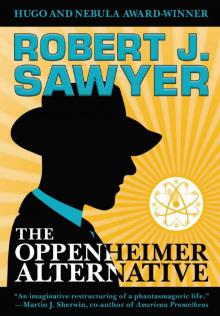 The Oppenheimer Alternative
The Oppenheimer Alternative Factoring Humanity
Factoring Humanity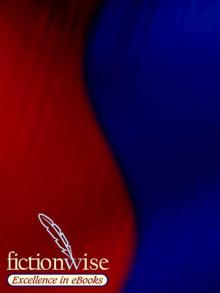 The Shoulders of Giants
The Shoulders of Giants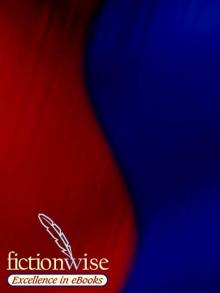 Stream of Consciousness
Stream of Consciousness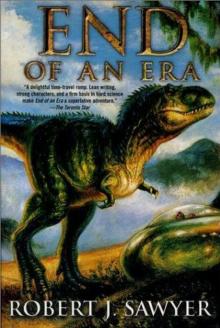 End of an Era
End of an Era The Terminal Experiment
The Terminal Experiment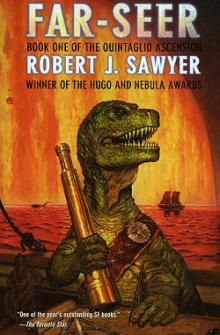 Far-Seer
Far-Seer Mindscan
Mindscan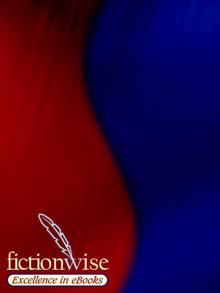 You See But You Do Not Observe
You See But You Do Not Observe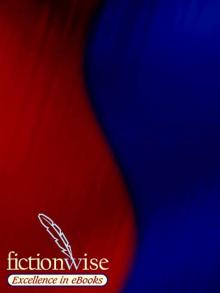 Star Light, Star Bright
Star Light, Star Bright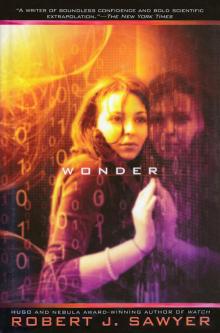 Wonder
Wonder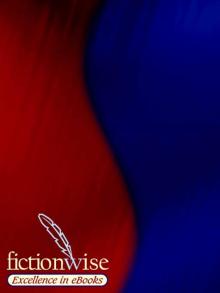 Wiping Out
Wiping Out Flashforward
Flashforward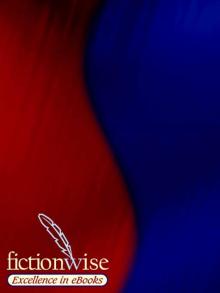 Above It All
Above It All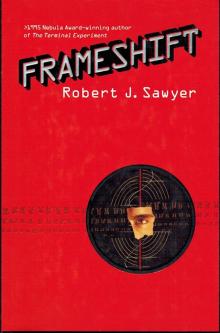 Frameshift
Frameshift The Neanderthal Parallax, Book One - Hominids
The Neanderthal Parallax, Book One - Hominids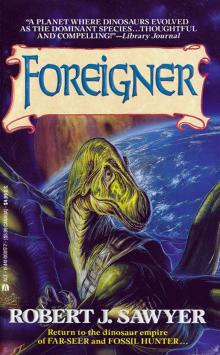 Foreigner
Foreigner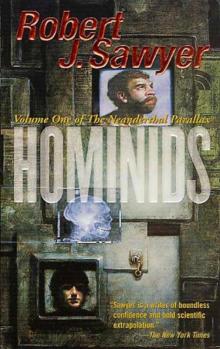 Neanderthal Parallax 1 - Hominids
Neanderthal Parallax 1 - Hominids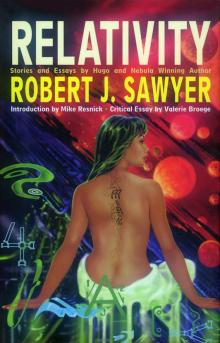 Relativity
Relativity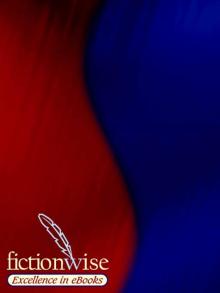 Identity Theft
Identity Theft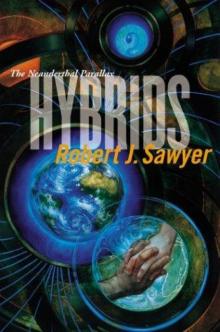 Hybrids np-3
Hybrids np-3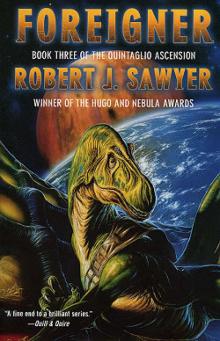 Foreigner qa-3
Foreigner qa-3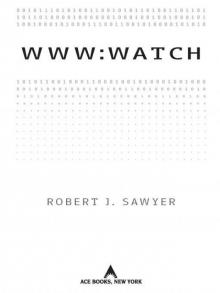 WWW: Watch
WWW: Watch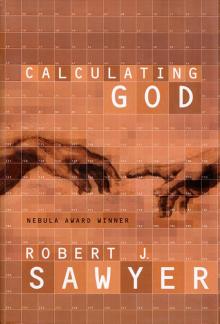 Calculating God
Calculating God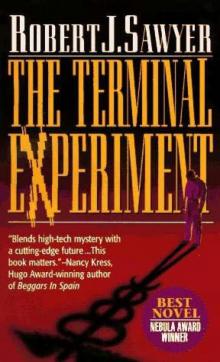 The Terminal Experiment (v5)
The Terminal Experiment (v5)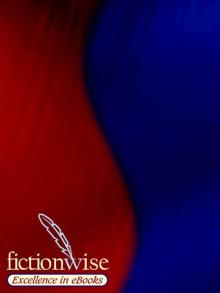 Peking Man
Peking Man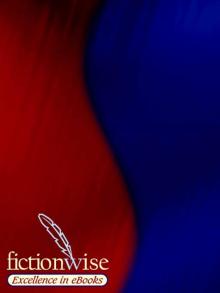 The Hand You're Dealt
The Hand You're Dealt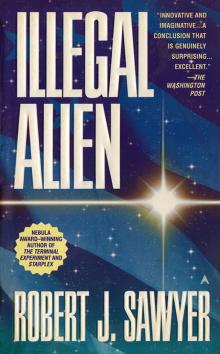 Illegal Alien
Illegal Alien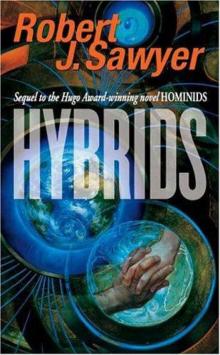 Neanderthal Parallax 3 - Hybrids
Neanderthal Parallax 3 - Hybrids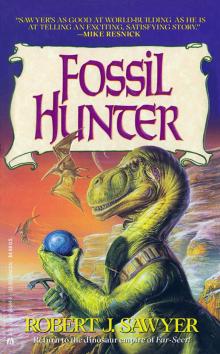 Fossil Hunter
Fossil Hunter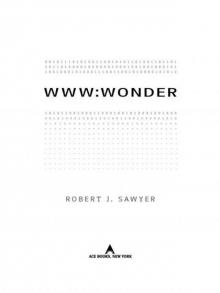 WWW: Wonder
WWW: Wonder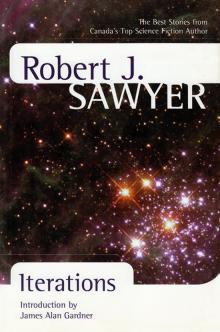 Iterations
Iterations Red Planet Blues
Red Planet Blues Rollback
Rollback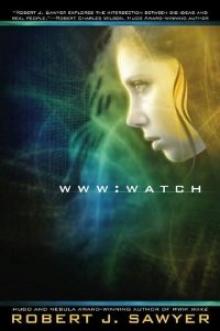 Watch w-2
Watch w-2 Gator
Gator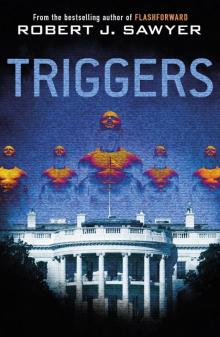 Triggers
Triggers Neanderthal Parallax 2 - Humans
Neanderthal Parallax 2 - Humans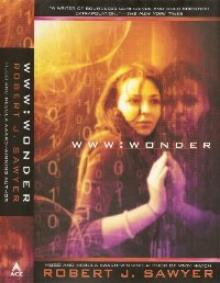 Wonder w-3
Wonder w-3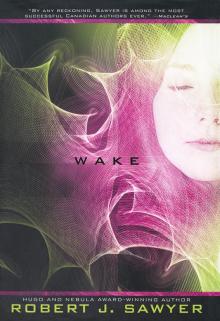 Wake
Wake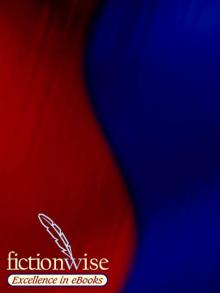 Just Like Old Times
Just Like Old Times Wake w-1
Wake w-1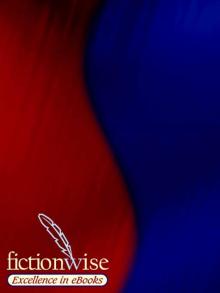 Fallen Angel
Fallen Angel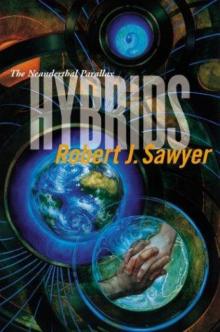 Hybrids
Hybrids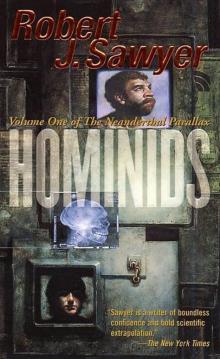 Hominids tnp-1
Hominids tnp-1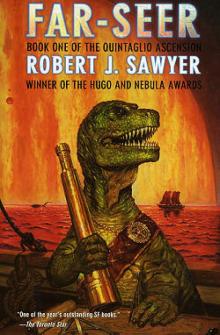 Far-Seer qa-1
Far-Seer qa-1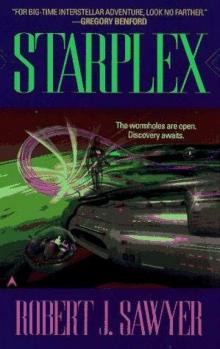 Starplex
Starplex Hominids
Hominids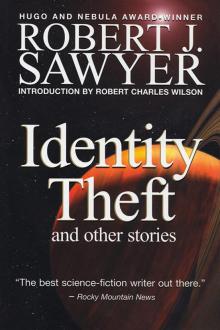 Identity Theft and Other Stories
Identity Theft and Other Stories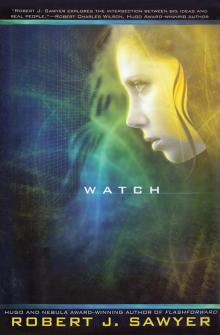 Watch
Watch Golden Fleece
Golden Fleece Quantum Night
Quantum Night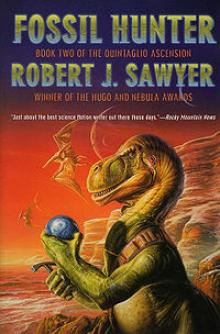 Fossil Hunter qa-2
Fossil Hunter qa-2 Humans np-2
Humans np-2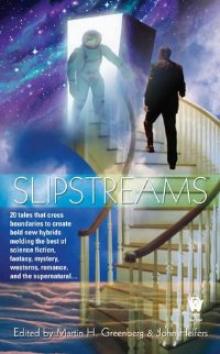 Biding Time
Biding Time